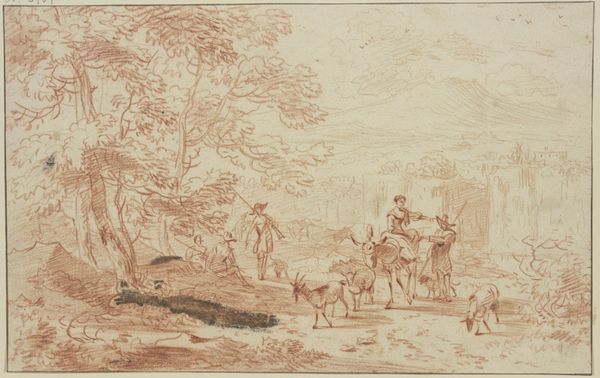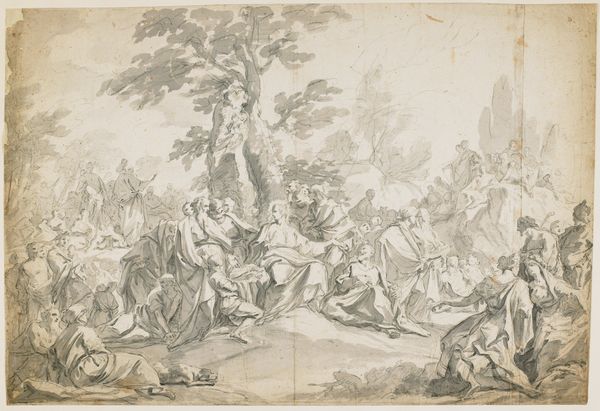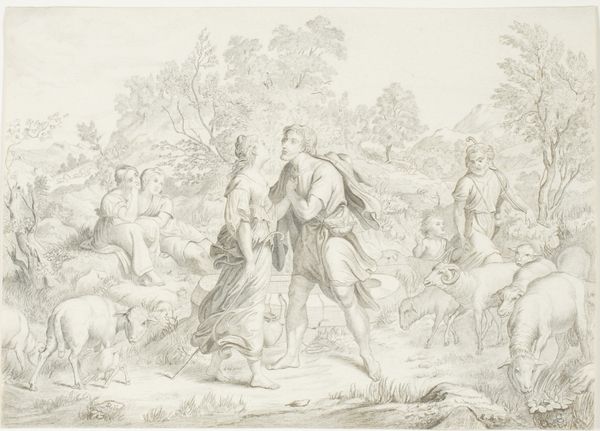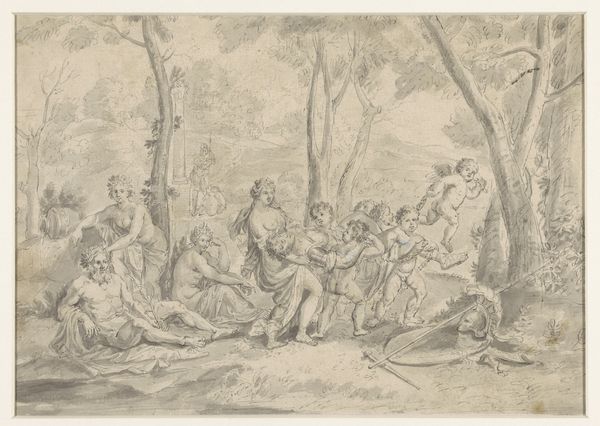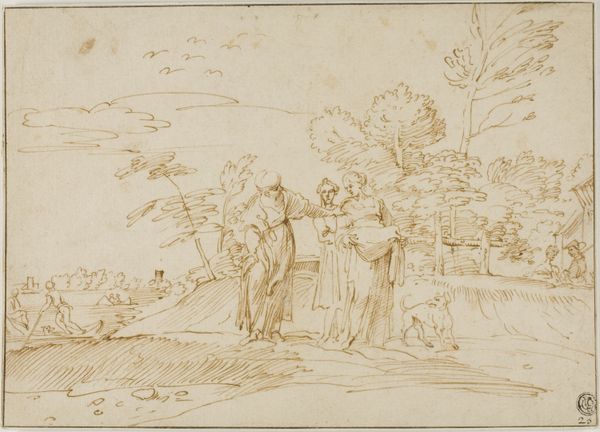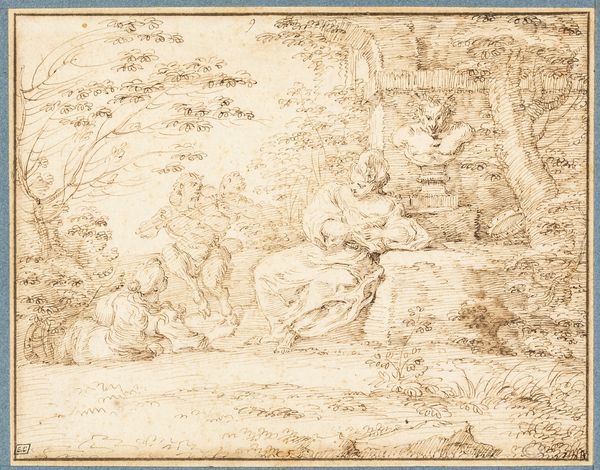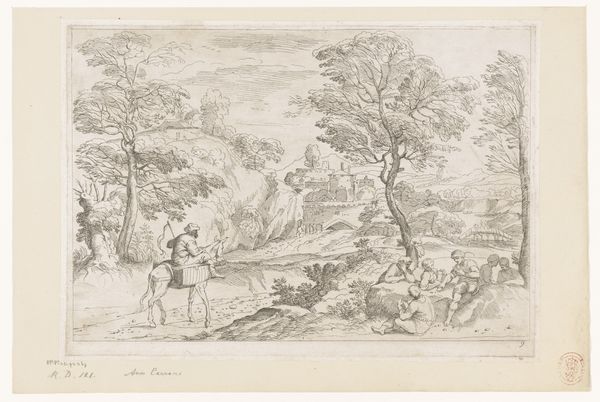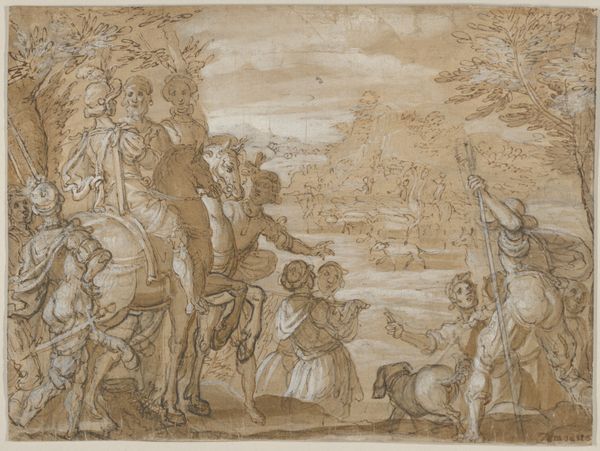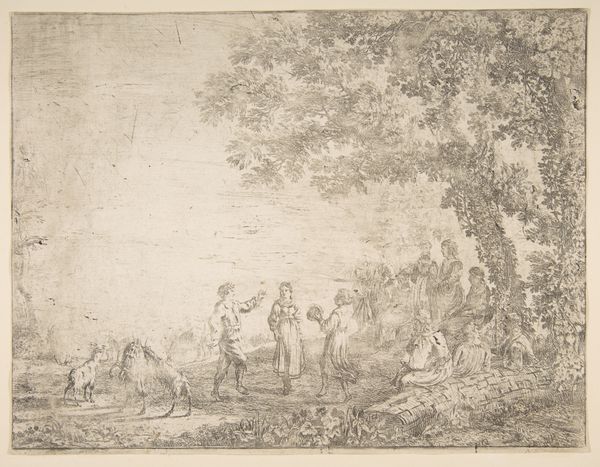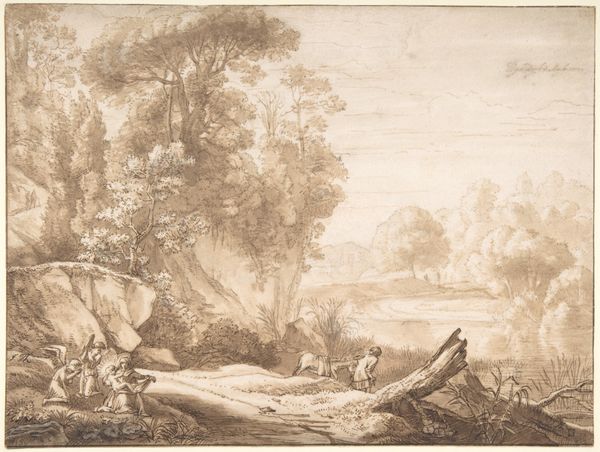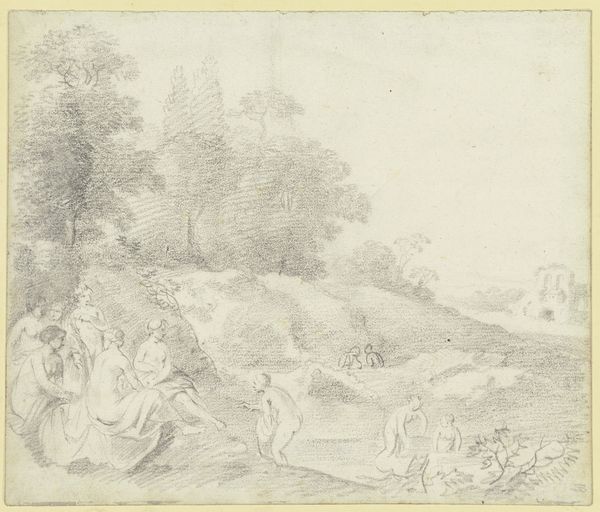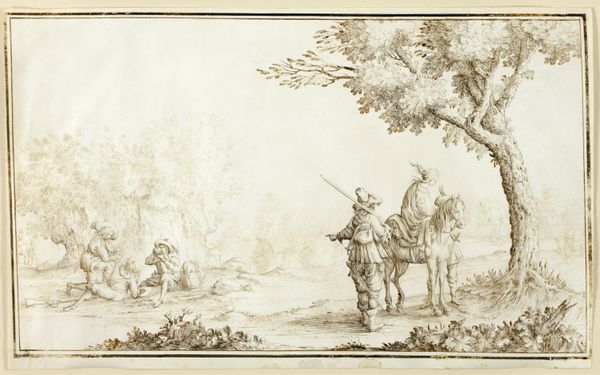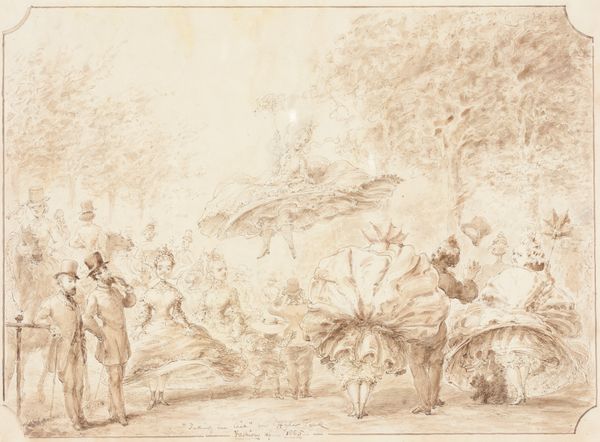
drawing, print, paper, ink, pencil, graphite, pen, charcoal
#
drawing
#
narrative-art
# print
#
landscape
#
charcoal drawing
#
figuration
#
paper
#
11_renaissance
#
ink
#
pencil drawing
#
pencil
#
graphite
#
pen
#
charcoal
Dimensions: 351 × 516 mm
Copyright: Public Domain
Curator: Upon first encountering this drawing, my attention is captured by the fluid and elegant use of line. It creates a dreamy and classical effect. Editor: We are looking at "Jacob and Rachel at the Well," by Marco Antonio Franceschini. It's rendered in ink, pencil, pen, graphite, and charcoal on paper. This work is a study of social interactions in pastoral scenes, which was very typical within his artistic circles. Curator: Note how the artist uses the tonal range of the medium to describe a vast landscape within this simple scene of Jacob meeting Rachel. He masterfully juxtaposes dark, expressive lines in the foreground figures to lead your eye through the drawing into a pale, subtly-rendered background. Editor: Right. Jacob's act of moving the heavy stone for Rachel becomes, in a way, an allegory of the contemporary relationships that Franceschini lived and worked with. Jacob could symbolize patronage, with Rachel being art itself, dependent on support. Do you see a relationship between this subject matter and patronage in Franceschini's time? Curator: Absolutely, your historical framing highlights the deeper connotations! It's compelling to view Jacob's labor as a metaphorical enactment of artistic creation under patronage. The careful composition and the nuanced characterizations also suggests this might have been created as a study, either for a larger work or to display the artist's skills to potential patrons. Editor: Yes. And notice that this drawing serves as an opportunity to reflect on gender roles. In it, Franceschini suggests female reliance and the expectations associated with providing assistance, mirroring perhaps unspoken conventions that shape life's relationships. It serves almost as an endorsement of such expectations, especially apparent given it's origins at that specific historical juncture. Curator: It really shows how the visual language speaks across time, giving us glimpses into societal expectations and power dynamics within the context of the artwork’s creation and the relationship between the artist, artwork, and those who funded their efforts. Editor: It all adds layers of meaning and opens new areas of study for interpreting Franceschini's work, it's as much about the formal elements as the complex power structures within the 17th century art world.
Comments
No comments
Be the first to comment and join the conversation on the ultimate creative platform.
